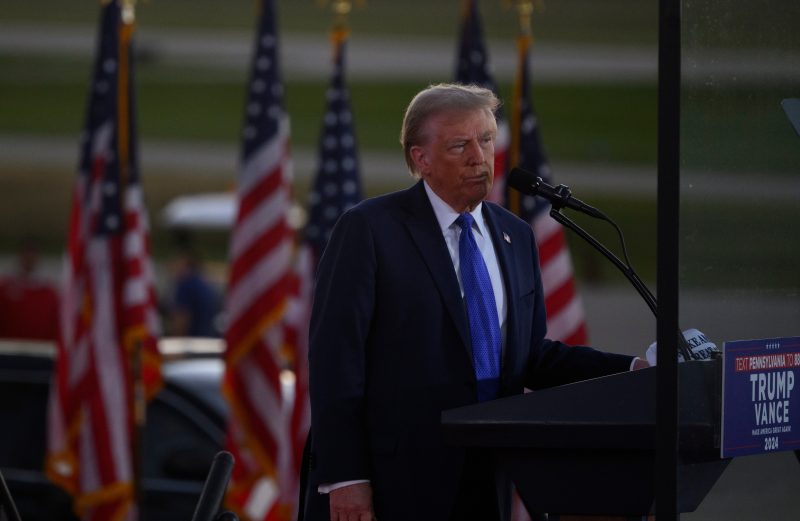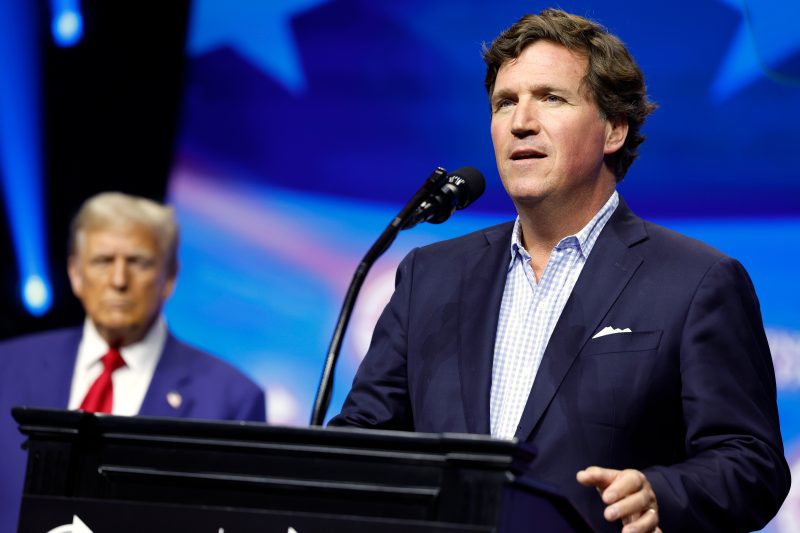
The remarkable contrast between Kamala Harris and Donald Trump
Almost immediately after President Biden announced his decision to withdraw from the Democratic Party’s nominating contest, some of his snarkier supporters began workshopping a new line of attack against Republican nominee Donald Trump: Can you get over how old this guy is?
The parallel to the criticism that drove Biden out of the race in the first place is intentional, of course. But it’s not wrong. Trump now goes from being the (relatively) young major-party contender to the (obviously) old one — even if the person he faces in November ends up not being the (relatively) sprightly Vice President Harris.
If the Democratic nominee is Harris, which seems likely, this is one of myriad points of contrast that didn’t exist when the matchup was Biden vs. Trump. The overall dynamics of the contest are likely to remain the same — the election will be a referendum on the former president — but the distinctions between Trump and Harris may be what tilts a close race in one direction or the other.
Distinctions such as:
Age
It’s worth doubling down on this particular distinction because it is probably the most consequential (and one that would almost certainly apply to any Democratic nominee).
A week ago, the Republican convention rolled into Milwaukee, Trump’s campaign giddy after he emerged nearly unscathed from an attempt on his life and appeared to be coasting to a rematch against a candidate seen broadly as doddering. It was hard for Republicans to criticize Biden’s frequent verbal fumbles in 2020 because Trump’s, particularly as president, were more significant. This year (and particularly after the June 27 debate) Trump’s weird comments and asides got far less attention than Biden faced every time he spoke.
That will continue over the next few months as Biden closes out his presidency, but the electoral stakes are negated. Instead, Trump is likely to face someone two decades younger than him (Harris is 59; Trump is 78) without the same habit of missteps and rambles. Now it will be Trump who will be scanned for signs of decline. It’s no longer “the guy who fell climbing stairs” against “the guy who was overly cautious going down a ramp at West Point.” Now it’s just the latter guy.
Gender
It is likely to be just one guy in total.
This year’s presidential contest was already shaping up to be an echo of 2016, two unpopular candidates seeing whose base was most likely to show up in force on Election Day. Should Harris be the Democratic nominee, it mirrors 2016 in the gender split between the parties, too.
Some significant portion of the opposition to Hillary Clinton’s candidacy eight years ago was rooted in misogyny. That will almost certainly be a factor in opposition to Harris, as well.
But the landscape has shifted. Harris has taken the lead in the administration’s efforts to protect national access to abortion, the Supreme Court’s repeal of which is directly attributable to Trump. For obvious reasons, many voters concerned about access to abortion will find Harris a more sympathetic messenger than the former president.
The other shift since 2016 is that there are more points of valid criticism of Trump’s treatment of women. A month before the 2016 election, the “Access Hollywood” tape was released, spurring a flurry of allegations from women who complained they had been forcibly kissed or touched by Trump. Last year, one such incident led to a significant financial judgment: A jury determined that Trump had raped — using the judge’s language — writer E. Jean Carroll.
Oh, there was also his criminal conviction on charges of having falsified business records to obscure his technically-only-alleged sexual encounter with an adult-film actress while his youngest son was still an infant. But that plays into another divide between the two candidates.
Relationship with criminal justice
Once Biden’s withdrawal was announced and Democrats consolidated (still incompletely) around Harris, her supporters noted the applicability of her pre-Senate career: Harris is a former district attorney and state attorney general. Trump’s relationship with government prosecutors, of course, is as a target.
When Harris was (ultimately unsuccessfully) seeking the Democratic nomination in 2020, she used this contrast as an argument for her candidacy.
I prosecuted sex predators. Trump is one.
I shut down for-profit scam colleges. He ran one.
I held big banks accountable. He’s owned by them.
I’m not just prepared to take on Trump, I’m prepared to beat him. pic.twitter.com/bg4xZ4uLne
— Kamala Harris (@KamalaHarris) November 20, 2019
Again, this was before the spate of criminal charges targeting Trump and before the lawsuit from Carroll. It was before Trump tried to overturn the results of the 2020 election and before he took classified documents to Florida after leaving office. The landscape has shifted since this ad was released, in a way that makes the contrast sharper.
Trump’s response to his indictments in Manhattan and in Fulton County, Ga., was at times to highlight that the prosecutors who obtained the indictments were Black. More than once, he explicitly accused them of being racist against White people. Which, of course, is a contrast in its own right.
Race
One of the underappreciated aspects of American demography is that younger Americans are more likely to be Asian, Black, Hispanic or mixed-race than are older Americans. In other words, talking about the political views of younger Americans and those of non-White Americans is often talking about a lot of the same people.
Harris — young only by the standard of the 2024 presidential contest to this point — is a reflection of America’s increased diversity. She is Black and South Asian, one of 10 percent Americans of a mixed racial background. (About 15 percent of U.S. residents younger than 18 are multiracial.) It is not the case that this guarantees Harris significant support from Black, South Asian or other non-White voting groups, certainly, but it does draw a sharper contrast with Trump.
It may also play into Trump’s explicit efforts to characterize White Americans as embattled.
Record in office
At its convention, the Republican Party was relentless in targeting Biden and his record in office. Harris was mentioned more than she had been in 2020, but the focus was on making the political case against the incumbent.
Suddenly, that’s largely gone. Harris, as Biden’s vice president, can be criticized for the administration’s perceived failures or for her work as vice president (both real and exaggerated). But she also remains at a distance from much of it. The administration’s positions on the Afghanistan withdrawal or the war in Gaza are much easier to tie to Biden than to Harris.
We’re in an unusual situation. The candidate likely to be running as a continuation of the incumbent administration is someone who has not herself served as president. The candidate running as the challenger to the incumbent has a record in office. Harris can present herself as a blank slate to voters in a way that Trump cannot, an inversion of recent incumbent-challenger patterns.
All of these distinctions ignore the most obvious, of course: that the election will be between a Democrat and a Republican with very different visions of the United States and of the presidency. That was always the case. The transition from Biden to (presumably) Harris means that the choice being made by voters in November now unfolds along several other dimensions, too.



